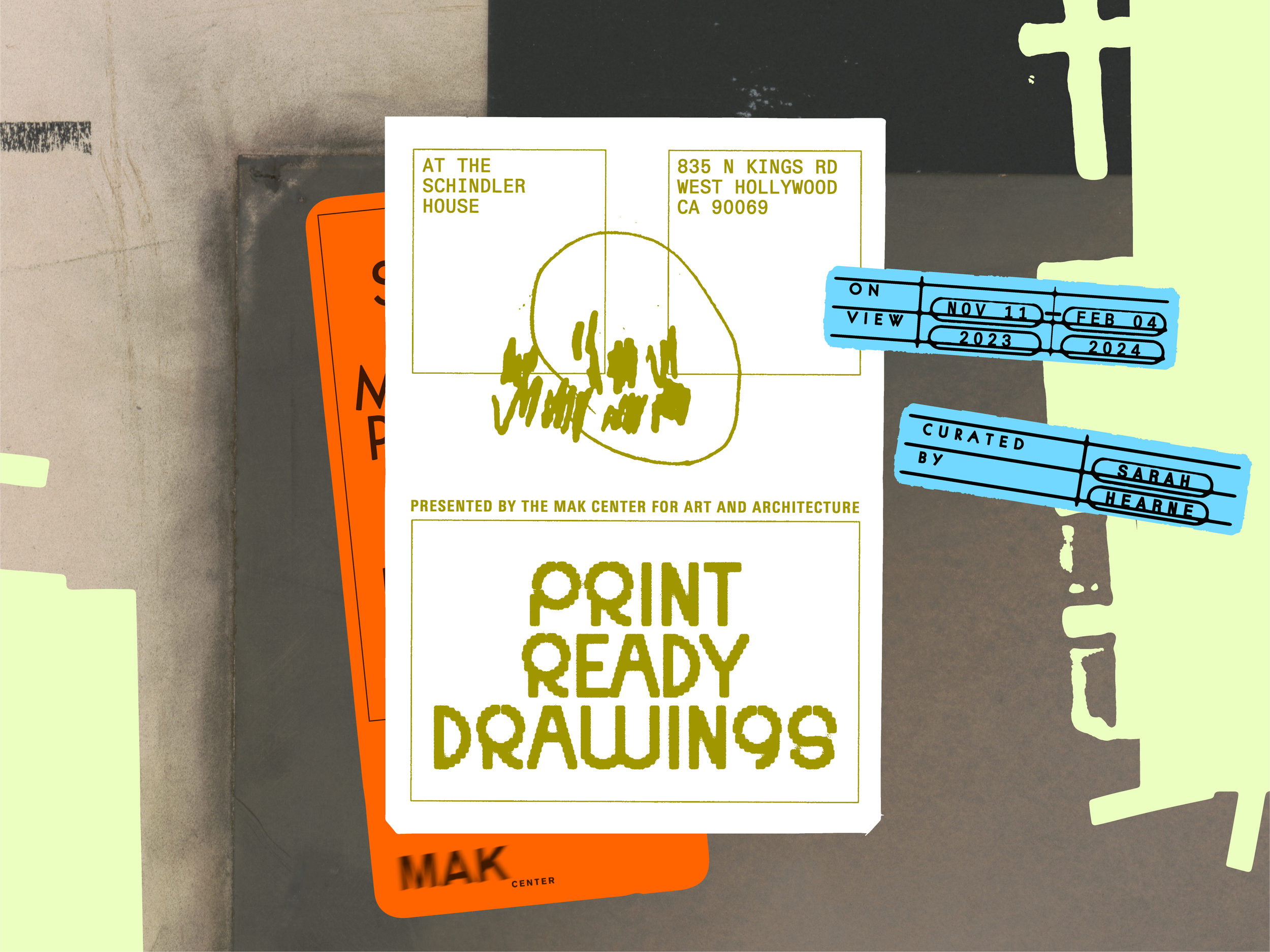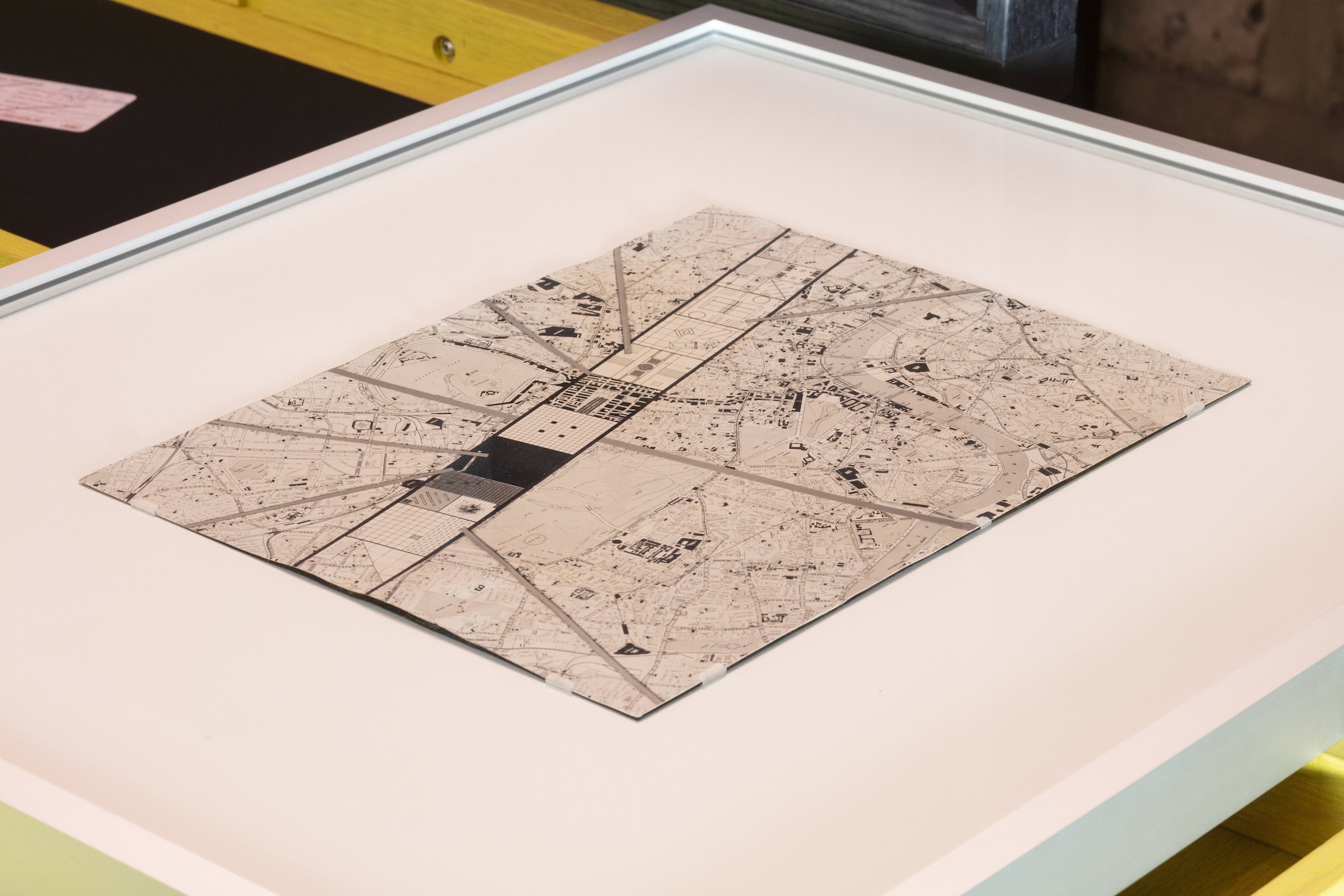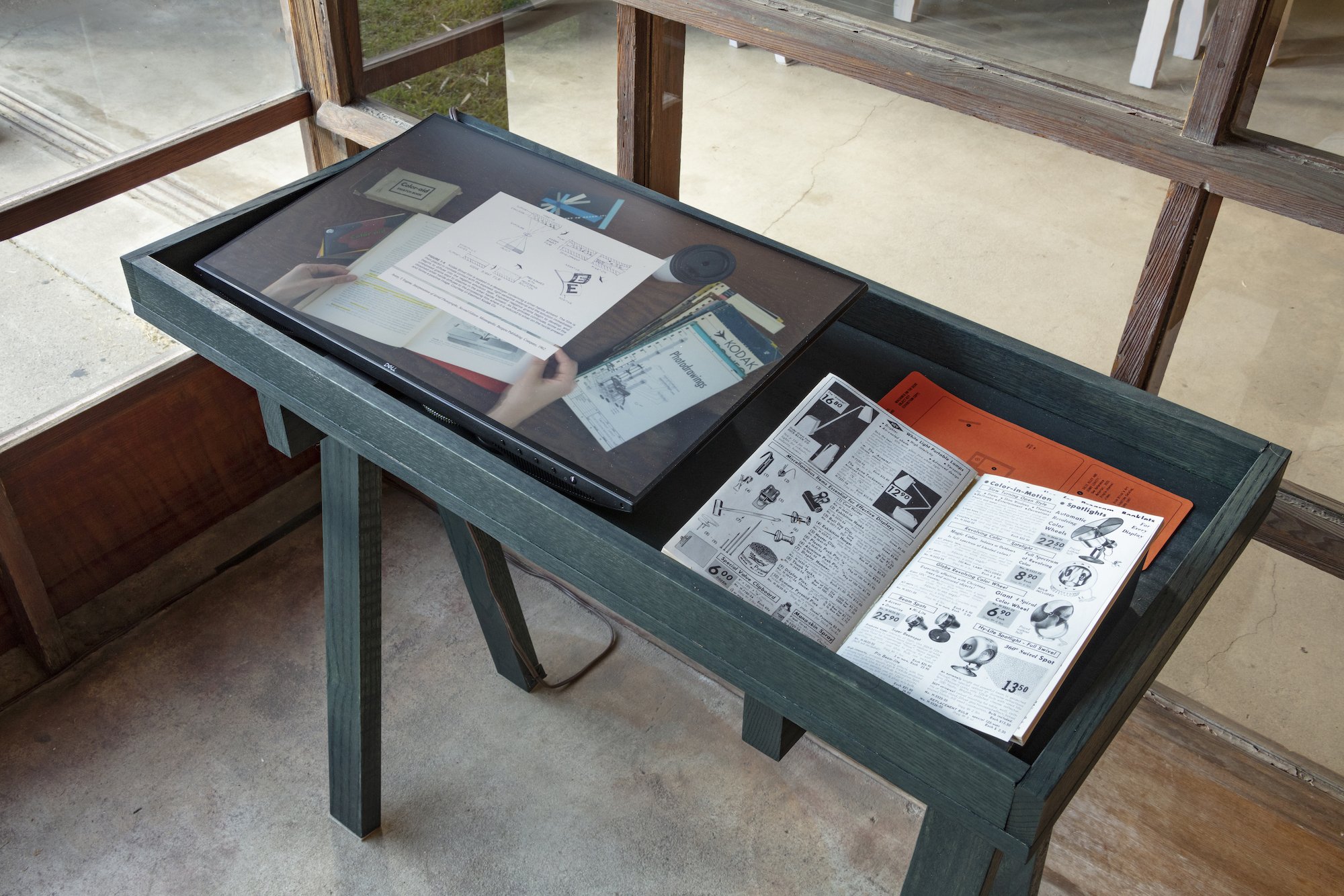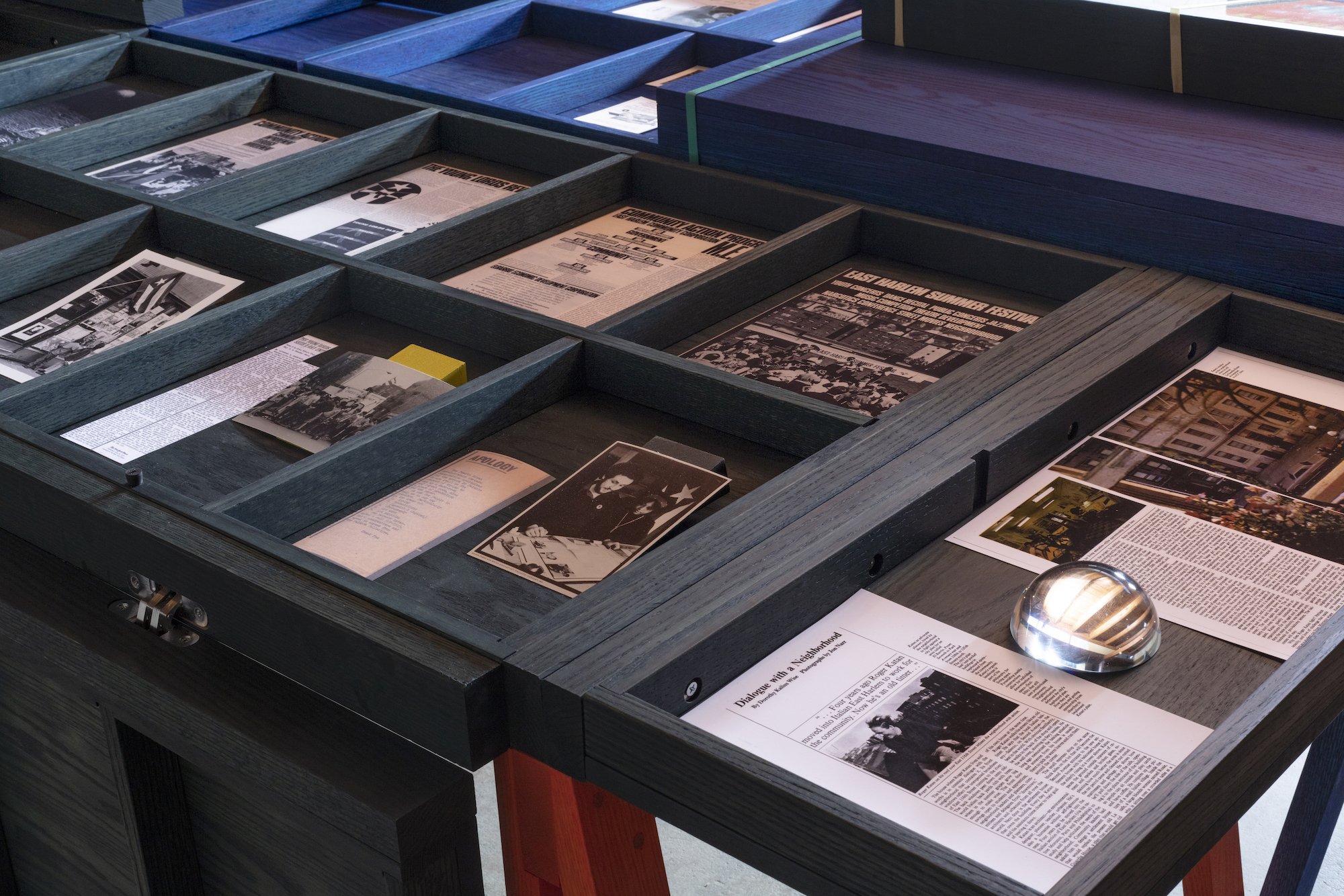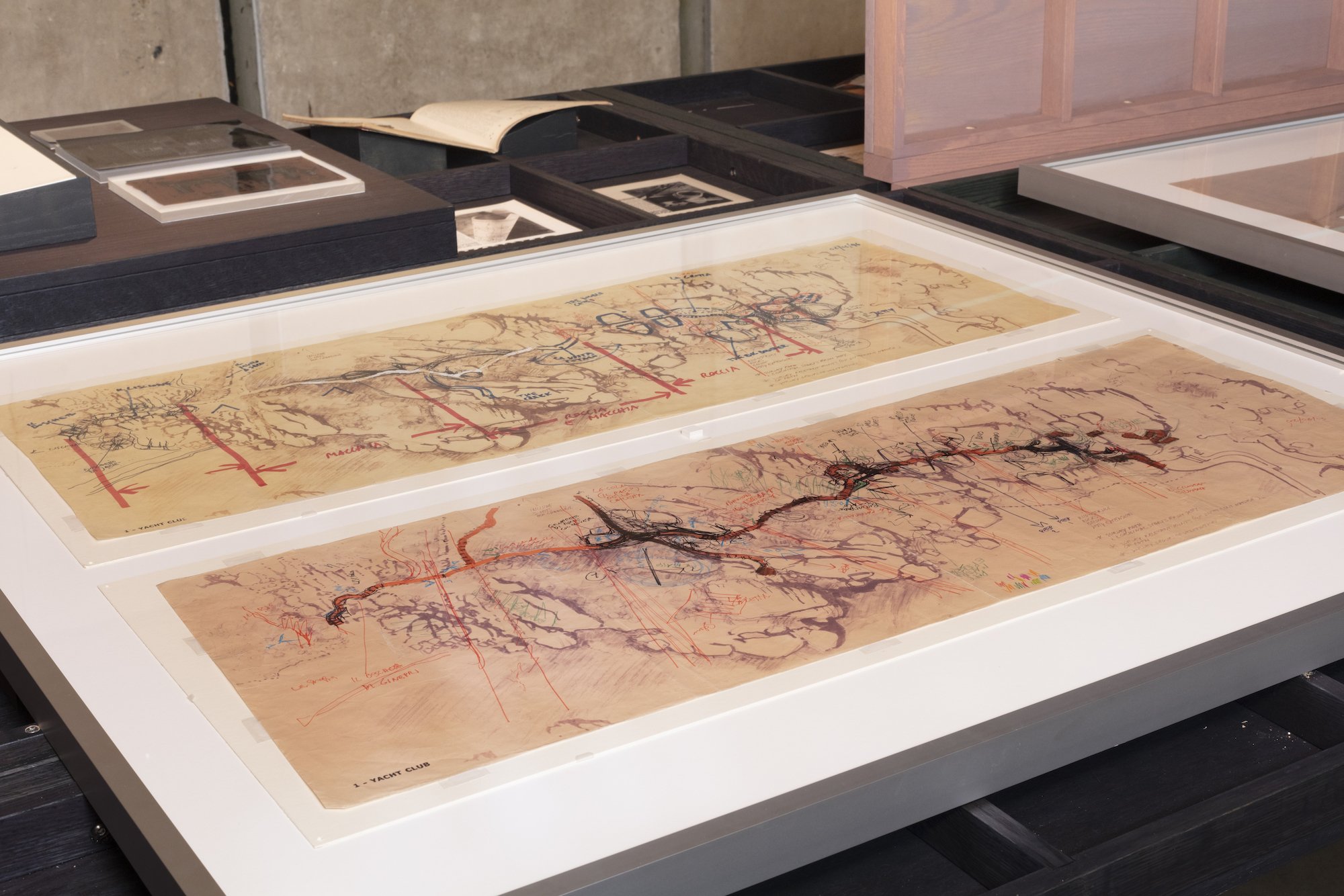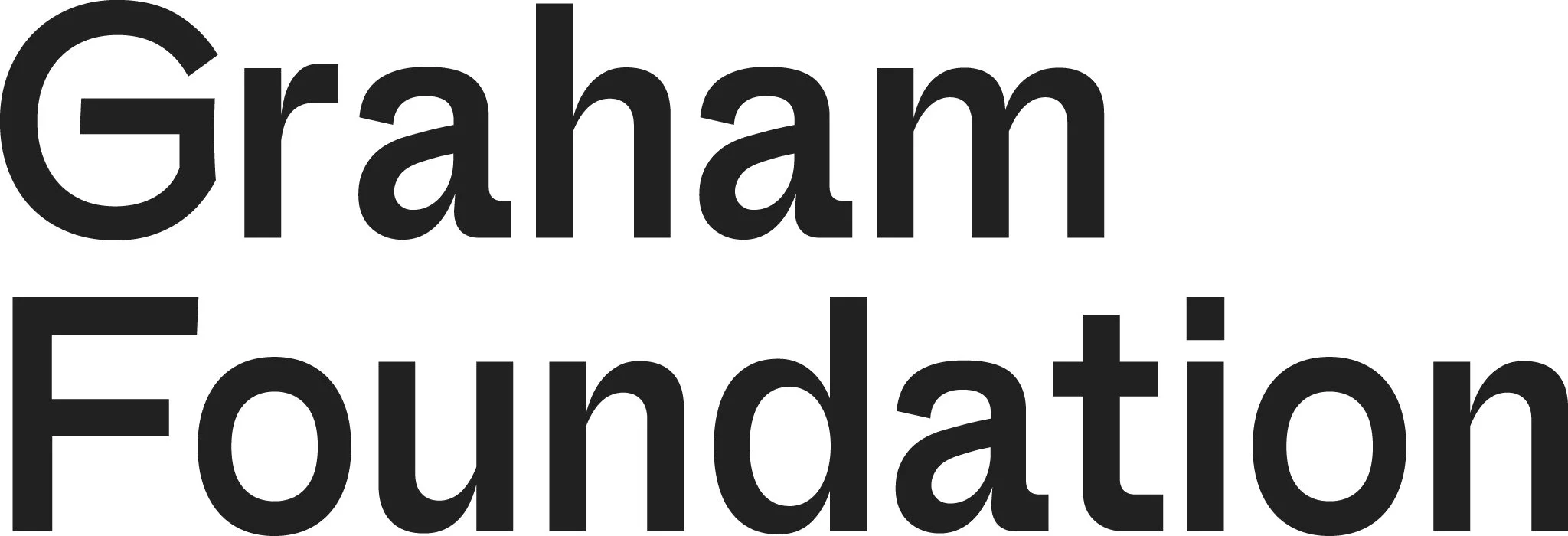Image: Christina Huang
Between 1950 and 1989, an intense print culture emerged when architects began to engage with graphic media, producing drawings and collages intended for reproduction and publishing. Print Ready Drawings investigates the process behind these printed images. Emblematic of this period, composite and mechanical documents were produced from graphic supplies such as photographic papers, Letraset transfer sheets, Rapidograph pen sets, and other graphic templates. The exhibition features prints and reproductions, exploring a history of architectural authorship not via singular authors but through an examination and display of the material supplies and techniques of drawing production.
From “instant pictures” to “rapidraw” systems, the items crowding the architect’s desk from the mid-century reflected a preoccupation with speed and efficiency. With a flourishing of supplies and materials that transformed the work of many in the graphic fields, this was a period in which architects engaged widely with technologies of printing and printmaking. Whether in the service of the distribution of working drawings, or in the making of carefully stamped lithographic multiples, architects worked to make their architecture print ready.
Through a selection of 12 case studies, Print Ready Drawings highlights these miniature paper landscapes. Across their surfaces are expressions of control: annotation marks, enlargement instructions, manufacturer tags, and watermarks, along with evidence of any number of unacknowledged contributors.
Drawings in this exhibition are viewed as microcosms of the material world, and their convergence in each document tells a social and production history of architectural work. Their organization into technical affinities produces curious pairings, like Lina Bo Bardi and Roger Katan, whose magazine cover designs constitute parallel case studies of contextual and material appropriation. Other groupings include scientific illustrator Gloria Brown Simmons, Eames Office, and Herbert Bayer’s World Geo-Graphic Atlas.
Print Ready Drawings also includes a variety of production ephemera, technical manuals, and samples, alongside artist’s films that turned the camera inward towards the process itself, including Richard Serra’s Color-Aid film. Several drawings featured in the exhibition, considered too fragile to be exhibited, are replicated through a process of material and technical research in conservation labs, manufacturing workshops, eBay, and oral histories. This research is documented in films made by Julie Riley and Jenny Leavitt that interpret and translate historical materials and modes of making.
The site of architectural authorship has long been found in drawings. By anonymizing the technical and foregrounding original marks and signatures, drawings played a crucial role in prioritizing cognitive acts over material labor — thus obscuring their intersection. This exhibition examines the architectural drawing as the arena of architectural work—the mundane, the repetitive, and the documents that convey how architects navigate the borders between private work and what is destined to be public.
Guest Curator: Sarah Hearne
Saturday, November 11, 2023
6–8 pm
Related Events
Sunday, January 21, 2024
12—2:30 pm
Saturday, February 3, 2024
3—4:30 pm
Print Ready Drawings is curated by Sarah Hearne, with curatorial assistance by Arianna Borromeo and support from the MAK Center exhibitions team Seymour Polatin, Exhibitions and Programs Manager and Brian Taylor, Curatorial Assistant. The exhibition features commissioned films by Julie Riley and Jenny Leavitt. Exhibition design is by Current Interests with conservation support from Paradise Framing. Graphic design is by Christina Huang.
Installation images: Joshua Schaedel
Print Ready Drawings was made possible, in part, with generous support from the Getty Foundation’s Paper Project Series. Additional support was provided by the Graham Foundation for Advanced Studies in the Fine Arts and the University of Colorado Denver, College of Architecture and Planning.

